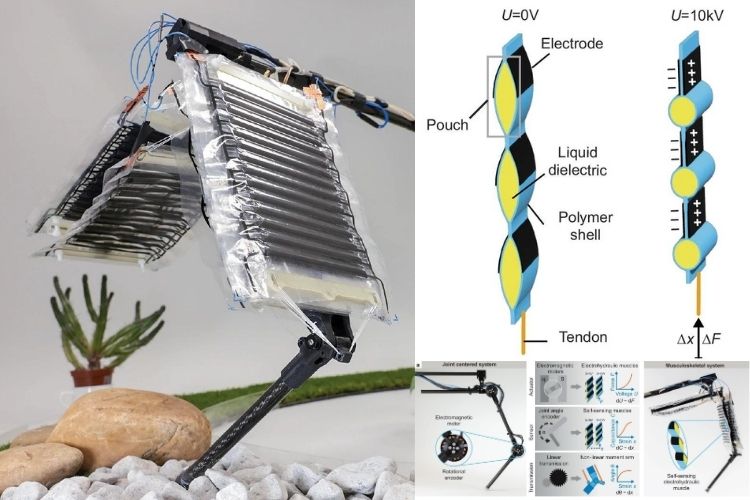
In a major leap for robotics, researchers have unveiled a new robot called PELE that uses electrohydraulic artificial muscles to improve its agility and energy efficiency dramatically. This breakthrough could revolutionize how robots operate in tough environments, making them more adaptable and efficient than ever before.
Unlike traditional robots that rely on stiff motors and rigid joints, this new design takes inspiration from biological systems. Its artificial muscles function like human tendons, allowing for greater flexibility and smooth movement.
What's This?
Built around a lightweight carbon-fiber frame, the robot is powered by electrohydraulic muscles that contract in a straight line. These muscles can even "sense" their own movement by detecting changes in electrical charge, eliminating the need for bulky motors or encoders. The result is a machine that moves with precision while consuming less energy.
In testing, the robot excelled across various terrains like grass, sand, and gravel. It can jump up to 40% of its leg height and perform rapid movements at over 5 Hz. Impressively, it boasts an extremely low energy cost of transport—just 0.73—making it far more efficient than those powered by conventional motors.
A standout feature is its versatile control system. The electrohydraulic muscles support both open-loop and closed-loop control. Using a simple PID controller, the robot can track movements accurately, and in open-loop mode, a small voltage adjustment regulates the muscle force—no complex motor encoders are required.
Future Scope
Electrohydraulic muscles could become a key component in various robots, from those assisting with everyday tasks to machines designed for tough environments. The adaptability and efficiency demonstrated by this technology suggest it could lead to more versatile robots capable of handling a wider range of activities.
Future improvements may focus on enhancing the precision and longevity of these muscles, potentially expanding their applications. As this technology advances, we can see robots that better blend into everyday life and perform tasks more effectively in diverse settings.

